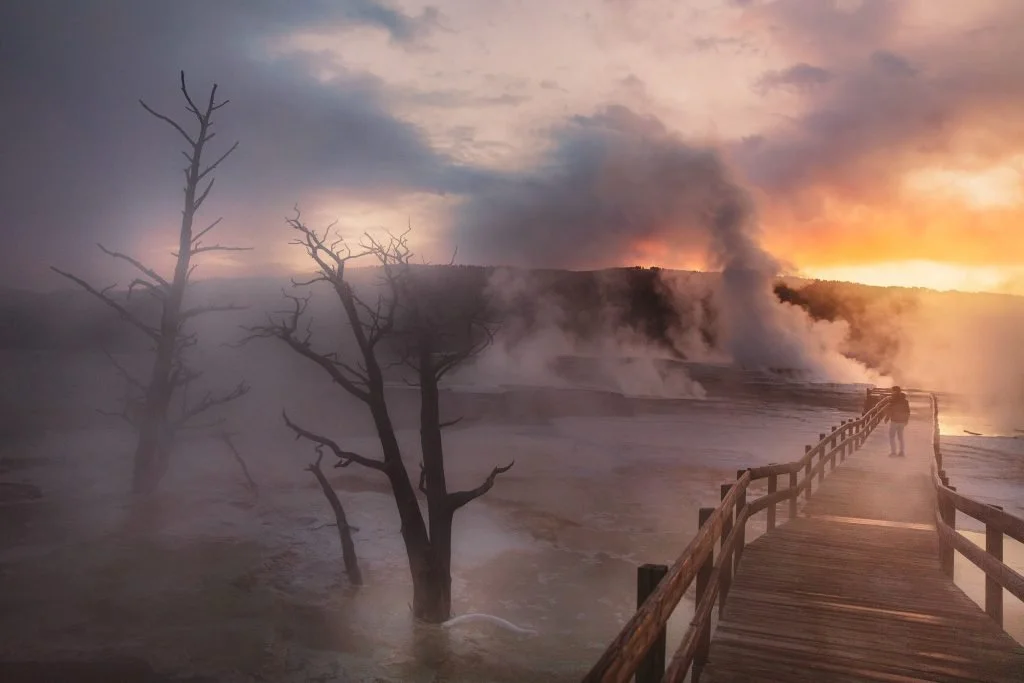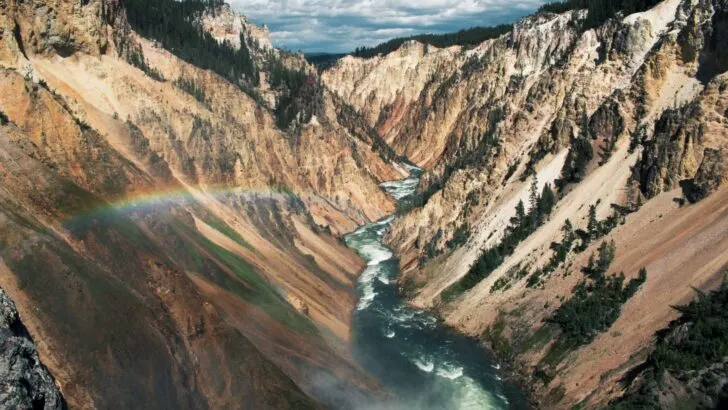The National Parks are a hidden treasure. They are located within the United States and offer individuals a unique chance to explore the natural beauty and majesty of the country. The first national park, Yellowstone, was signed into law in 1872 and since then, 62 additional national parks have been designated by Congress.
And if you are looking to explore the national parks, you may be wondering not only what to wear to the national parks but also how to properly prepare for your trip?
Below, we are going to review the best clothing options for visiting the national parks and will also be discussing how to prepare for your upcoming trip, including any necessities you should bring along and other items which may help make your trip more enjoyable.
Purpose of the National Parks
In 1916, the Organic Act created the National Park Service, with a stated mission of, “to conserve the scenery and the natural and historic objects and wildlife therein, and to provide for the enjoyment of the same in such manner and by such means as will leave them unimpaired for the enjoyment of future generations.”
Although the first national park commissioned by Congress and signed into law by President Ulysses S. Grant is the Yellowstone national park, it was certainly not the last. Since Yellowstone, nearly 62 additional parks have been commissioned as national parks, bringing the total number to 63 throughout the United States.
National parks, as compared to other parks across the nation and trails, are known for their beauty, geographical location, diverse ecosystems, and recreational opportunities. That is why so many people each year flock to the national parks, looking to soak in their natural beauty and charm.
Although California has the most national parks, with 9 total, many others can be found in various parts of the country, including the American Samoa and U.S. Virgin Islands territories. In 2017, over 84-million people visited the national parks, making them a top tourist destination and a go-to vacation spot for countless families.

Things to Consider Before Packing Clothes to Visit a National Park
While visiting a national park is bound to be a unique and memorable experience, and one that you will relive in great detail for years to come, there are a few important things to consider before packing your bag and jetting off.
Firstly, not all national parks are created equal. With 63 national parks across thirty states, each one will have different weather, elevation, and region-specific differences. As-such, you will need to prepare accordingly depending on where you plan to visit.
For example, if you are planning on visiting a national park in Alaska, you’ll want to prepare to wear clothing that is heavier and warmer. However, if you’re planning on visiting a national park in Florida, you’ll want to wear clothing that is cooler and less warm.
In addition, you should also check-out the National Park Services website for more up to date information regarding each park. Not only will you be able to get a more detailed view on each park and a detailed map of the specific park you are looking at, but you can also purchase discounted tickets.
Discounted tickets to the national parks are provided based on a few factors:
- Annual pass/general admission – $80
- Military pass – free
- US military members and their dependents in the Army, Navy, Air Force, Marines, Coast Guard, and Space Force, as well as Reserve and National Guard members
- US military veterans
- Gold Star Family members
- 4th Grade Pass – Free
- Free pass is available for the duration of the 4th grader’s school year through the following summer (September-August)
- Senior Citizen pass – $80 lifetime pass or a $20 annual pass
Best Clothing to Bring and Wear to a National Park
Ideally, while the weather and terrain differs from park to park, you will want to wear clothing which is both wicking and dries quickly. For determining what to wear to the national parks, choose pants and shirts which can be worn as a base layer and which both dry quickly and wicks away sweat.
We personally love the Under Armour Cold Gear Leggings which not only help to keep you warm but also can be worn under your pants to provide additional layers and protection from the colder weather.
Similarly, choosing either the men’s or women’s long-sleeve, quick dry shirts will help to keep you warm and wick away any sweat from your body. These shirts are particularly great while hiking or camping and can help you to avoid the cold and layer up quickly and easily.
While not so great during an actual hike, fleece sweaters and jackets can also help to warm your body after a hike or as the sun begins to set, bringing along colder weather. There are a plethora of options to choose from, for both men and women, however we definitely recommend that you test our each piece before your trip to ensure proper fit and comfort.
Similarly, you will want to bring along a sufficient rain jacket. Rain is oftentimes expected in the national parks and having a rain jacket will help you to avoid getting your clothes wet. We personally use the North Face’s Resolve Waterproof Jacket, which comes with a built-in hoodie and provides superior coverage against the rain.
Lastly, you should also invest in both a sunproof hat and waterproof shoes. Both items will help you to avoid the sun hitting your face as you trek along the trail and will also help your feet stay dry through more arduous and water filled portions of the trail.
For sun proof hats, we personally prefer using a fishing hat, which although looks odd, provides sufficient coverage for your entire face against the sun’s rays.
If you’re planning on visiting a national park during the winter months, then you will need to invest in warmer clothes. This really isn’t a recommendation so much as a necessity. This includes winter gloves, wool jackets, and wool socks. Believe me, you’ll be glad you shelled out the extra few dollars to protect yourself while on the trail.
And lastly, many National Parks across the country offer spectacular fishing spots and locations. While some of these parks require a permit to fish, many do not. and allow guests and visitors to fish across their many lakes, ponds, and rivers. If you’re looking for fishing gear, we highly recommend reading further on fishing gear and accessories to bring with you.

Non-Clothing Items to Bring to the National Park
While wondering what to wear to the national park will be one of your main concerns, there are also a few other items to consider and plan for. These items will not only make your trip easier, but they will make the trip more enjoyable overall.
- Cell Phone Portable Battery – while the debate rages on as to whether or not we are too consumed by technology, the fact remains that utilizing a cell phone definitely makes many aspects of life much easier. And the last thing you want is to not have sufficient charge on your phone as you trek the wilderness. To avoid any issues, we recommend investing in a cell phone portable battery and charger. These chargers will help you to get your phone fully charged in no time and are portable and easy to carry with you.
- Life Straw Water Bottle – both avid and casual hikers swear by Life Straw, and for good reason. Life Straw provides and easy and convenient way to filter impurities from a water source, allowing you to access fresh water from wherever you are.
- First Aid Kit – while we hope that you won’t have to use it, having a first aid kit can help you clean up any scrapes easily and get back to the trail. You should always bring a first aid kit with you when camping or hiking and this portable first aid kit is our go-to due to its small size and ease of carry.
- Polarized Sunglasses – polarized sunglasses aren’t a necessity, but you’ll definitely be glad you brought some along. These glasses will help you to see more clearly from the harsh rays of the sun and will keep your eyes from getting strained.
- Sunscreen – similarly, you will want to protect your skin from the sun’s harsh rays and UV rays. Be sure to invest in high SPF sunscreen for maximum protection.
- Insect Repellent – lastly, be sure to invest in insect repellent. As you will be out in the wilderness, insects and bugs are bound to be plentiful. Avoid the nuisance that comes with insects and invest in high-quality insect repellent to make your trip to the national parks more enjoyable.
- Cooler – while it may be difficult to trek through the national parks with a cooler, if you are planning on parking and remaining close to your vehicle, then investing in a high-quality cooler will help you to keep your food and drinks cold throughout your trip.
Download Google Maps Offline Mode
Lastly, to make your trip even more enjoyable, be sure to download the area of the national park you intend to visit on your phone or tablet. While many areas of the national parks have sufficient cellular coverage, many areas do not. To avoid getting lost, you should download the map to your phone, where it can be accessed even without a cellular signal.
To download Google Maps offline, simply follow these steps:
- Open the Google Maps app on your phone
- Make sure you are connected to a cellular or Wi-Fi network
- Search for a national park or the national park you intend to visit
- At the bottom, tap the name or address of the place and click on more
- Select Download Offline Map > Download
